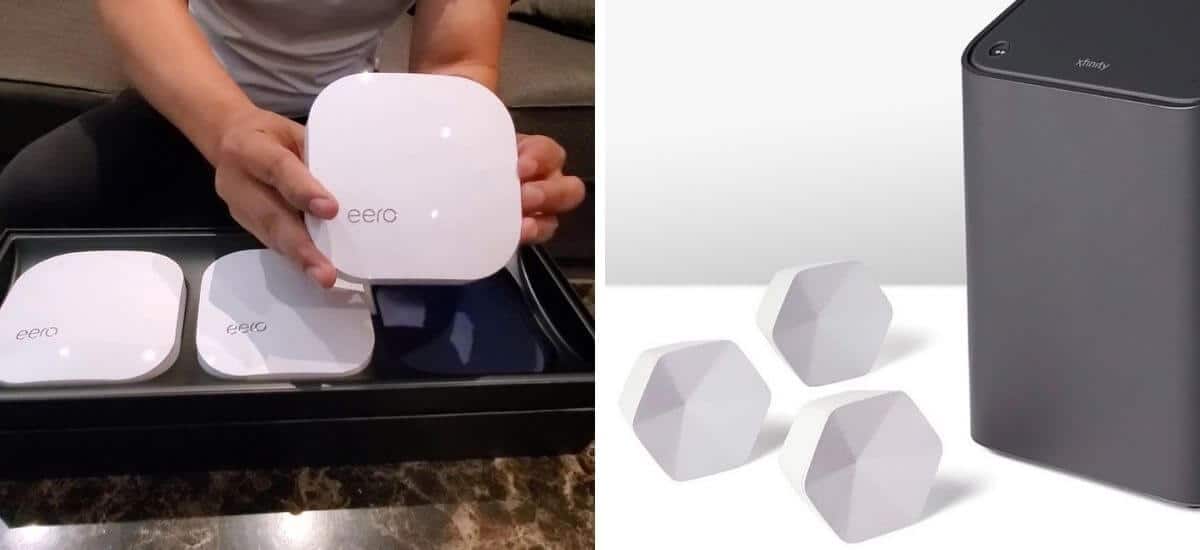Do you have a problem with a lack of Wi-Fi signal in your home? Because there are many reasons for poor signal transmission, you might want to explore employing a mesh networking system rather than depending on a single router. That’s why we’ll look into the xFi pods and Eero.
The Eero is a set of three identical units that work together to spread a Wi-Fi connection throughout a residential property, bringing much-needed scalability to the Wi-Fi setup at home. However, when compared to other Wi-Fi routers, it has a high price tag. The xFi Pods, on the other hand, are Comcast’s most recent attempt to enter the mesh networking market. Even though these pods appear to be promising, a few aspects make us doubt if they are worth the money.
In this article, we will compare the xfi pods and the eero, see their similarities and differences, their advantages and disadvantages.
The differences between the xfi pods and the eero in table form
| Xfi | Eero | |
| dimensions | 7.9 by 2.6 by 2.8 inches | 3.9 by 3.9 by 2.4 inches |
| weight | 3.98 ounce | 3.5 ounce |
| Upload speed | 10 megabytes per second | 150 megabytes per second |
| Av throughput speed | 250 Mbps to 300 Mbps | 447 megabytes per second |
| Download speed | 50 megabytes/sec | 300 megabytes/sec |
How do Comcast xfi pods and Eero compare?
1. setup
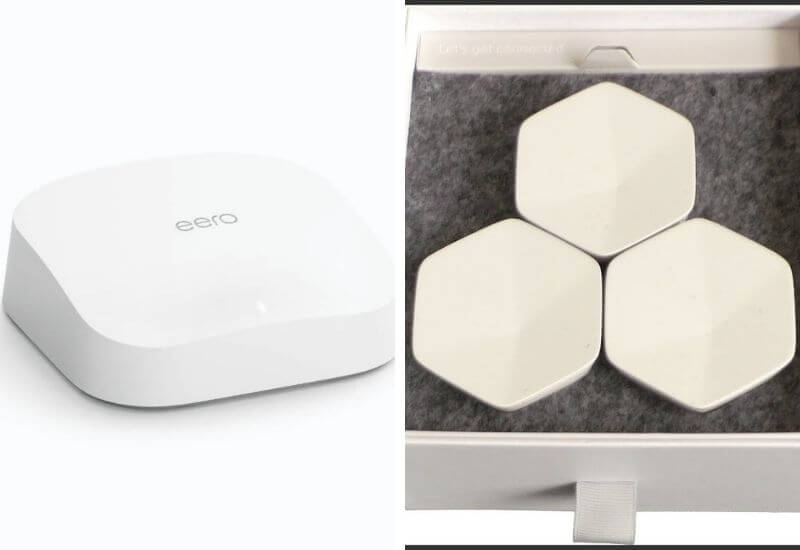
There are some differences between the Eero’s original design and usage, and these differences are readily apparent when looking at its software updates. Many of these are based on data gathered from Eero’s customers and the implementation of possible improvements in subsequent models.
The Eero mesh networking system employs a new TrueMesh approach, according to the company. It also has Alexa integration, and the mobile app’s interface has been polished. However, at its core, the system is a low-power type that is simple to set up and provides medium to fast internet speeds in every room of your home – depending on the number of units you choose to install, of course. You can use the Eero app on your phone to set it up.
The company behind the xFi pods, Comcast, wants to provide users with a new type of mesh technology, which you can purchase in three-packs or six-packs. These units have a polygonal shape and can be plugged directly into an outlet to form a mesh network with the Comcast router, allowing you to extend your Wi-Fi signal throughout your home.
The xFi wireless gateway or the xFi advanced gateway are the best options for these pods. The xFi system is a web interface or app that allows you to manage your Comcast Xfinity Wi-Fi service. Again, it will enable you to do additional tasks such as changing your password, setting up your network, and receiving notifications when new devices connect to the network.
Despite the manufacturer’s claim that the pods have an intelligent architecture that allows for self-troubleshooting and self-monitoring. Moreover, you can use the app to set up the pods and monitor the devices attached to certain pods.
2. Performance

The primary flaw with the Eero is that there is no wireless connectivity between the devices (in other words, the backhaul connection). Instead, it will use either the 5GHz or 2.4GHz band, depending on the distance between the Eero units. Because the teams must receive and rebroadcast the signal simultaneously, this has several consequences, the most significant of which is a signal loss of up to 50%.
You may daisy-chain the Eero units using long network cables to reduce signal loss, which is beneficial if your home has a complicated architecture.
Compared to prior months, the TrueMesh upgrade has resulted in the Eero being substantially faster in performance. When using a single router, the average speed is 447 Mbps, while at a distance of 75 feet, the average speed is 182 Mbps. Adding a second Eero router slows connection speeds, with a near-range score of 179 Mbps and a more extended distance of 146 Mbps.
The Eero is the best option here due to its quicker speeds and TrueMesh software update, which results in faster and more efficient performance.
Compared to prior months, the TrueMesh upgrade has resulted in the Eero being substantially faster in performance. When using a single router, the average speed is 447 Mbps, while at a distance of 75 feet, the average speed is 182 Mbps. Adding a second Eero router slows connection speeds, with a near-range score of 179 Mbps and a more extended distance of 146 Mbps.
The Eero is the best option here due to its quicker speeds and TrueMesh software update, which results in faster and more efficient performance.
3. Compatibility
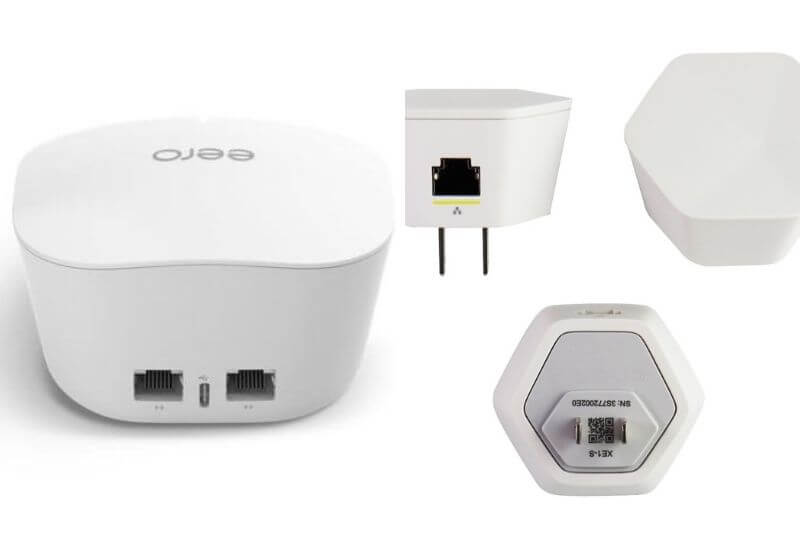
The Xfinity Comcast xFi Pods support three different radio bands. That means that your xFi pods can provide three times the bandwidth of a traditional single-band router. As a result, network congestion is reduced, and the network is more consistent and stable throughout.
The Xfinity xFi Pods also include an Ethernet port and support for ZigBee and Bluetooth LE radios. However, because the xFi pods are not interoperable with any other network system, you may only use Comcast rental modems or routers with them. Before you buy, make sure your router is compatible with the xFi pods by contacting the seller.
The eero mesh Wi-Fi router, on the other hand, connects with your internet service provider directly to act as a standalone router or with cross-compatible hardware to expand your existing home network. The eero router is dual-band enabled, meaning it can connect to both the 2.4 Gigahertz and 5 Gigahertz Wi-Fi bands, and it features two Ethernet ports for fast wired connections. Because it’s an Amazon product, the eero mesh router is Alexa compatible, allowing you to use voice control by pairing it with an Alexa device.
The eero router also works with Apple Home Kit, allowing you to connect it to HomeKit-enabled routers and giving your HomeKit gadgets extra protection. Controlling what they are allowed to communicate both within the home network and over the internet provides protection.
The eero Mesh Wi-Fi Router from Amazon is the clear winner in this area because of the extensive range of routers it supports and its integration with Alexa and Apple’s HomeKit.
Eero vs. Comcast xFi pods – A comparison review
1. Overview of Comcast xFi
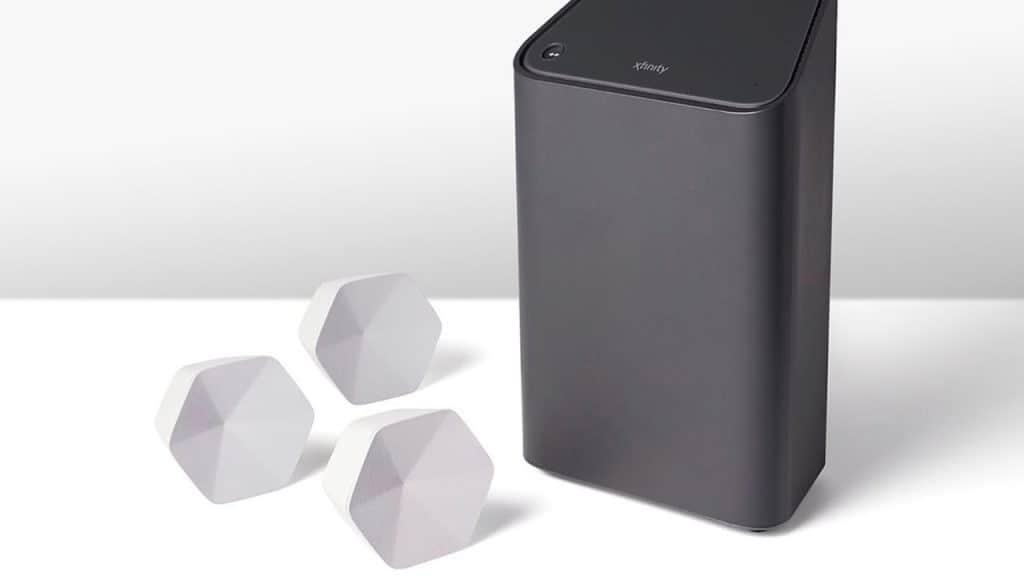
The Comcast xFi pods are the most recent version of the xFi advanced gateway, one of the router-modem combos available with Xfinity Internet. They have a unique advantage over the Eero in that they support Wi-Fi 6, which helps give faster speeds and better handling of today’s growing number of networked devices in the home.
Apart from Wi-Fi 6, the pods are equipped with four dual-band antennae. One 2.5 Gbps Ethernet port, the 5GHz and 2.4GHz bands, ZigBee and Bluetooth LE radios, and three 1 Gbps Ethernet ports are all supported. It also has a white hexagonal style that blends in with your decor, and you can use it to create a mesh network with the new sophisticated gateway.
The biggest issue is that the new gateway is not available to all Comcast customers; it only applies to those who have a package with a minimum speed of 300 Mbps and does not include the XFi Advanced Cyber protection package. Everything adds up to a higher long-term cost for the xFi pods, as you’ll have to lease the cyber security package for $5.99 per month on top of what you’re already paying for the internet and the Comcast router.
2. Overview of the Eero router
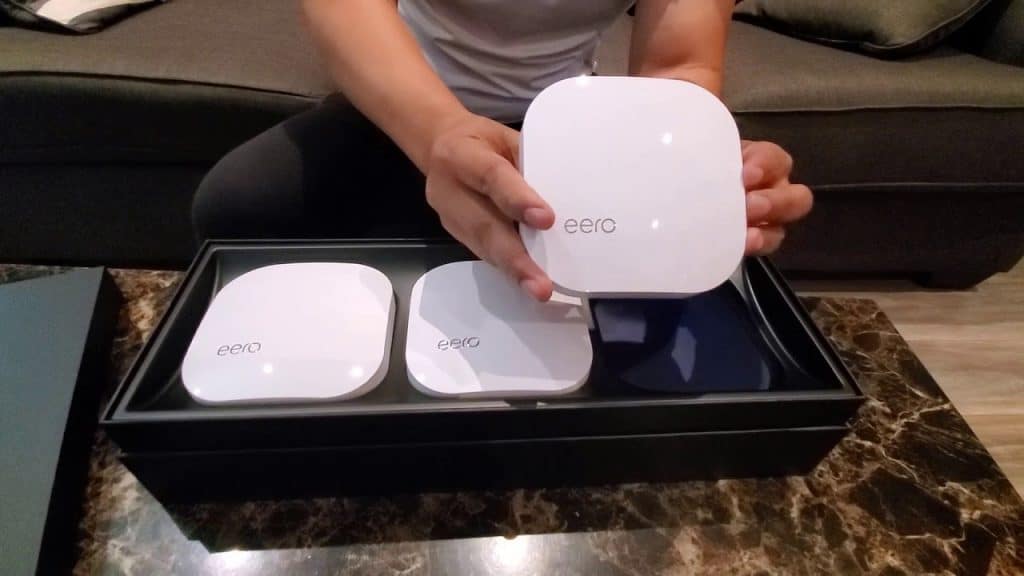
Eero is one of the most well-known mesh routers on the market, and for a good reason: it combines robust connections with ease of use. It also simplifies the configuration procedure, especially if you’re utilizing it in a large home, by eliminating the need for a sophisticated mesh system. Going between devices is also handled flawlessly by the system, even while moving between beacons and base.
In terms of market lifespan, it has been around for a long time, and it is even available in a less expensive form that was released recently. However, due to its multiple capabilities, its original incarnation (in the Eero Pro) is still highly popular. Its sole drawback is overkill if used in a tiny space, but it is an attractive choice for larger houses or workplaces.
Advantages of xfi pods
- The layout is simple.
- The connection is pretty stable.
The drawbacks
- In the long run, it’s costly.
- Many people are unable to access the service.
- The connection is usually shaky.
Pros of eero router
- The setup procedure is straightforward.
- A socket-mounting design is used for the beacons.
- The app UI is fantastic.
- It is pretty simple to grow the networks.
- Excellent network performance
Drawbacks of eero router
- The value of the subscription system is dubious.
- It is pretty costly.
- Wi-Fi isn’t available.
- For folks who use it in limited settings, it’s overkill.
Frequently asked questions:
- What number of eero devices does one require?
It all depends on the size of the area you’re covering. A typical residence will require a maximum of three units; therefore, a tiny apartment will only need one, while a larger property will require four or five.
- Do xFi pods use the 5GHz, 2.4GHz, or both bands?
Although this is not a feature we have tried, the vendor claims you can use them for both bands.
Conclusion
Because of its pleasant user experience, improved performance, and a broader range of compatible devices, the eero Mesh Router is the best router to use. That is an excellent device for large homes or small offices, but it can be overbearing in smaller households. The Xfinity Comcast xFi pods, on the other hand, are the way to go if you have devices that support Wi-Fi 6, as Amazon’s eero router does not support Wi-Fi 6.
While the xFi pods’ tri-band frequency class may appear to be a superior option due to the greater bandwidth it can supply, Amazon’s eero Pro can provide the same benefit while still giving all of the other benefits of an eero router.
